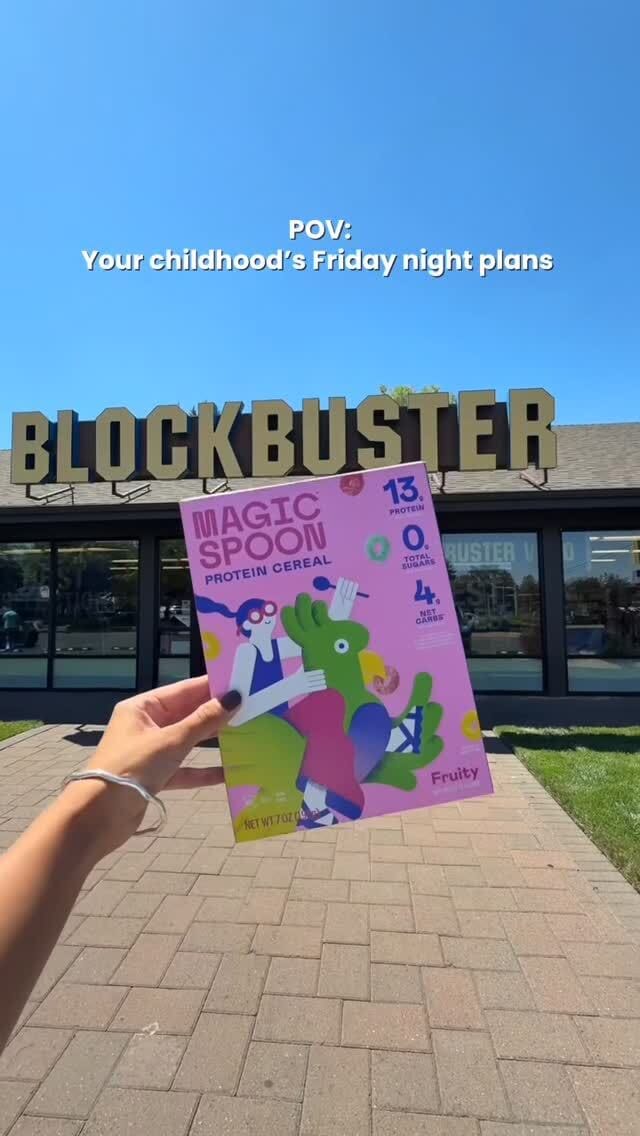- Marketer Gems
- Posts
- Podcast and Influencer Marketing Strategy of Magic Spoon
Podcast and Influencer Marketing Strategy of Magic Spoon
The DTC brand that skipped traditional advertising to build a cereal empire through trusted voices and nostalgic marketing
Howdy, marketer!
The shelf space for food brands is crowded, and hoping someone notices you in the cereal aisle is a fingers-crossed bet.
Magic Spoon took a different approach - they skipped the traditional route entirely and built a cereal empire through podcast ads and Instagram influencers.
They turned expensive, healthy cereal into a lifestyle statement that millennials actually want to talk about.
This isn't just another DTC success story.
Magic Spoon cracked something fundamental about modern marketing: they figured out how to make people feel smart for buying premium cereal instead of being guilty for spending $40 on breakfast.
They did it by betting everything on authenticity, nostalgia, and the power of trusted voices saying "this stuff actually tastes good."
Today's Treasure Trove
advertisement
Workamajig: The OS Powering Top Agencies
Workamajig is the operating system for top agencies — one place to plan capacity, track time, manage budgets, and see profit live.
Know what’s on track, what’s over, and what’s next.
Pitch big. Deliver bigger.
From estimate to invoice, creatives to clients, everything flows. Built to scale with powerful reporting, approvals, and resource management.
If it runs your agency, it runs in Workamajig.
What Magic Spoon Actually Is
Quick Stats:
Instagram: 407K followers
TikTok: 37.7K+ followers
Magic Spoon makes what they call "childhood cereal for adults." The flavors have names like "Fruity," "Cocoa," and "Peanut Butter" - clearly designed to trigger those Saturday morning cartoon memories.
The brand launched in 2019 by Gabi Lewis and Gregory Sewitz. They wanted to solve a simple problem: why does healthy cereal taste terrible?
Rather than compromise on taste to hit a lower price point, they went the opposite direction. Make it taste exactly like the cereal you remember loving, price it like the premium product it is, and find customers who value both nostalgia and nutrition enough to pay for it.
Who's Actually Buying $40 Cereal
Magic Spoon's core customer is a health-conscious millennial who grew up eating sugary cereal, feels guilty about it now, but still craves those flavors.
Think about the psychology here.
These customers have disposable income but limited time. They're willing to pay more for convenience and quality. They're also heavily influenced by podcasts, follow fitness and wellness influencers, and share their lifestyle choices on social media.
The genius is in how Magic Spoon positioned themselves in this customer's mind.
They're not competing with other healthy cereals - they're competing with the choice between eating something healthy and boring versus something tasty but guilt-inducing.
This audience also tends to be early adopters who influence others.
They're the people their friends come to for product recommendations.
Podcast Advertising
Magic Spoon's approach was deceptively simple: find podcasts where their ideal customers were already hanging out, then make the ads feel like genuine recommendations rather than interruptions.
Magic Spoon partnered with Adopter for 3 years. They strategically partnered with shows like The Tim Ferriss Show, The Joe Rogan Experience, and Pod Save America - programs with engaged audiences who matched their health-conscious, millennial demographic perfectly.
These hosts wrapped the endorsement in a personal recommendation, holding way more weight than traditional advertising because listeners trust these hosts' judgment on everything else - why not cereal?
The targeting is surgical. These aren't mass-market shows - they're podcasts with highly engaged audiences who care about health, fitness, productivity, and optimization. The listener who's interested in Tim Ferriss's thoughts on nootropics is probably also interested in a high-protein, low-carb cereal that doesn't mess with their diet.
Moreover, it’s also listed on the blog of Tim Ferris, increasing the reach!
Influencer Seeding
Most brands approach influencer marketing backwards - they find popular accounts and try to buy their way into recommendations.
Magic Spoon flipped this by focusing on authentic product seeding rather than paid partnerships. They sent free cereal to influencers in health, fitness, and lifestyle niches, then let authentic enthusiasm drive the content.
Magic Spoon focuses on micro-influencers and niche creators rather than mega-celebrities.
For instance, a fitness coach with 10K followers and high engagement who posts about their actual breakfast routine is more valuable than a celebrity with millions of followers who obviously doesn't eat cereal. The smaller influencer's audience trusts their recommendations because they know this person actually lives the lifestyle they're promoting.
They also have a #magicspoonpartner program:
Every aspect of the product is designed to be social media-friendly, so influencers don't have to work hard to make it interesting.
Magic Spoon's social media strategy stands out because it focuses on entertainment and community rather than direct selling.
The content strategy taps into nostalgia without being heavy-handed about it with playful videos that remind you of being a kid.
The brand voice is conversational and playful rather than corporate. They respond to comments, engage in trends, and don't take themselves too seriously. They also reference pop culture to stay relevant.
Wrap Up
For other brands, the takeaway isn't to copy Magic Spoon's tactics but to understand their philosophy: know exactly who you're for, create products that deliver on your promises, and build marketing around authentic enthusiasm rather than manufactured hype.
✌️,
Tom from Marketer Gems








Social Media Marketing